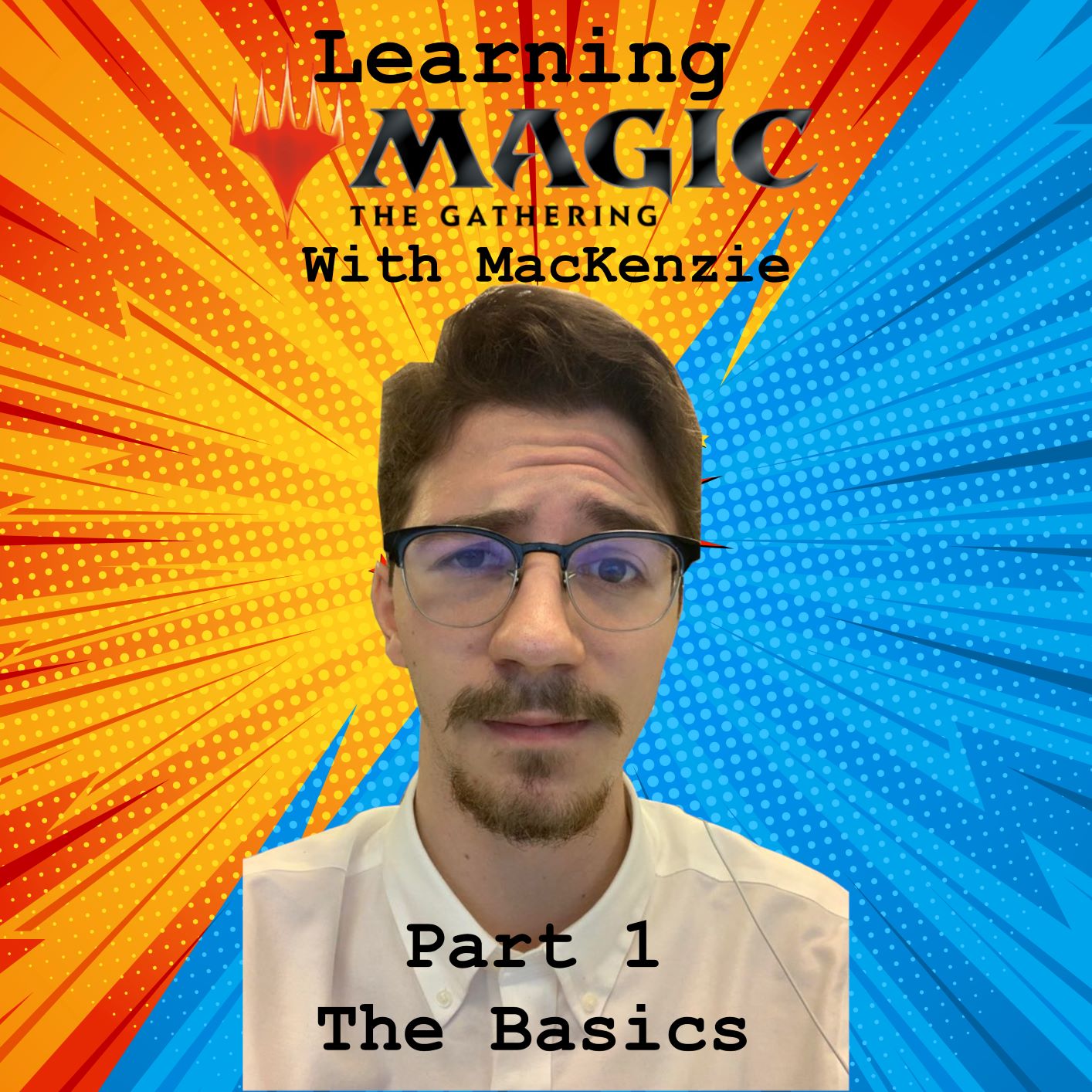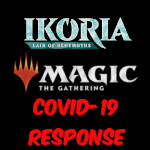
So you have discovered Magic: The Gathering. You’re beginning a journey you won’t want to stop for the foreseeable future; at least that’s the way it was for me. The game itself seems very simple when you get down to brass tax, but it becomes much more complex the longer you play the game. Don’t worry about that for now though, I am here to get you started, help you learn the basics, and set you on your way to becoming a powerful player.
There are many games comparable to Magic, but none quite like it. For starters, it has been around for over 25 years at this point, longer than cards games like Yu-Gi-Oh or Pokemon TCG. That alone would not set it apart, the strategy and deck-building within this game span multiple formats and age groups, allowing anyone to play at any time. These formats cater to a number of different groups and competitive spirits. Though, for someone just getting started there is an easy way to learn the basics of play and begin challenging yourself to learn this game; through an online client called MTGA, or Magic the Gathering Arena.
The client mentioned above has a select number of formats and ways to play the game, allowing new players to learn the basics as well as play with their friends whenever they would like. This platform is particularly relevant in our current situation, where tabletop gameplay is difficult to arrive at, especially for someone looking for a new hobby or new to the game. Using this platform someone can begin to experience the world of Magic while in the comfort of their home. You wouldn’t come to read an article about an online gaming platform though, and that is why I am here; to tell you about the real game itself.
The Game:
Magic the Gathering has a fundamental base; where everything is built off of, just like any other TCG or Video Game. This base is aptly seen in the basics within the game. “Basics?” you may ask, “what are those?” These are the building blocks that the game uses to progress. Every game of Magic has a deck, a set of cards put together with a goal set in mind, that use’s these basics and other mana sources to play spells.
Mana is how you pay to put cards into play, On the majority of cards, there is a Mana cost. A cost associated with what it will take to get that spell into play. This mana is generally produced by land cards. These lands allow you to build a functional deck to play against your opponents. Your deck will have a mixture of lands and spells. The regular ratio is around ⅓ of a deck should be lands or other sources of mana. Allowing the rest of the deck to be filled with spells to further your gameplan.
There are a number of types of spells within the game; Instants, Sorceries, Creatures, Enchantments, Artifacts, and Planeswalkers. These are all the types of spells one can cast in the game, these types span a number of colors as w0ell under the idea of Basic Mana types; primarily Forests (green), Mountains (red), Islands (blue), Plains (white), and Swamp (black). These are the base elements of any Magic the Gathering deck, as stated previously, that will allow you to create a deck that functions like clock work.
Each of these card types and color types has their own identity within the Magic the Gathering universe; all primarily doing something different in regards to how the game progresses. This allows for a large number of different decks to be built and played against each other without the game ever going stale in terms of gameplay scenarios. To help you understand this, it would be best to go over the colors themselves and what their functionality is within the game, while then going more in-depth into the different card types; this will allows one to get a better understanding of the type of player they are and what they may like to try out as their experience with the game deepens.
The Colors:
Forests (green): This is the color of nature as one would suspect. This color focuses on creatures both small and large, hoping to grow out into the world in any way possible. It has a focus on getting on board and beating down one’s opponent over time. Green has a focus on Elves and a multitude of beasts to overcome your opponent’s strategy.
Mountains (red): This is the color of anger and fire, as one would suspect this color wants to burn things down. It is focused on removing opponents’ creatures and killing your opponent as fast as possible. It relies on small creatures and a build up of damage over the early turns usually. Red creatures have a base in creature types like Goblins and Dragons to clog up the board.
Islands (blue): This is the color of serenity and patience. This color wants to play a long game the majority of the time, focusing on attrition to take your opponent low on resources and saying “NO” to everything they try to do. This is not the only thing the color does, but it is the basic principle of the color to control the board through countering spells and playing the long con. Blue creatures range heavily, but there is a focus on sea animals in leviathans and krakens, as well as merfolk.
Plains(white): This is the color of justice and duty within the game, with an aspect of attrition one could expect. This color focuses usually on tokens and incremental value, hoping to outdo your opponent by overwhelming them and living far longer than they would. A key aspect of this color would be gaining life, a resource that every magic game begins with, as a way to keep ahead of your opponents. White focuses on Angels and humans for a great deal of its creature base.
Swamps (black): This is the color of destruction and of horrors. This color focuses on hurting your opponent through incremental card advantage and card disruption. Mixing that idea with ways to destroy creatures on the board and control the cards you can cast, it is similar to blue as a controlling color. It also focuses on the darker creature types such as zombies, demons, and vampires as its base elements.
Now that you have a base understanding of how each color functions, it is time to look into the different types of cards you can play within your deck. A deck is standardly made up of 60 cards, with a 15 card sideboard, allowing you to modify your main deck in order to adapt to different decks you may come across. This will help you to build a deck to progress your gameplan, but also to affect your opponents in a 2nd or 3rd game. The cards in your deck help determine what your gameplan is the majority of the time.
Some decks prefer to have a very large number of creatures, the cards you use to attack your opponent’s life total that stay on the board, generally having power and toughness that allows them to physically attack your opponent and drop their life to 0. While others prefer to have a small number of creatures, and instead capitalize on a large number of instances, spells you can cast to affect the board at any time, and sorceries, spells you can cast only on your turn. Then there are Enchantments, these are a permanent, something that stays on the board after you play it, which have a variety of effects. They are very similar to Artifacts, a generally colorless card type that can be played in any deck, except they are very color restrictive the majority of the time. Finally there are planeswalkers, another permanent type, but these ones have abilities you can only activate once they are on the board, they are similar to a creature, except they cannot attack or defend, and can be targeted by your opponent with attacks or spells.
Whew, that was a lot to learn, right? Now you mash all your cards together, making sure you have green cards with your forests, and white cards with your plains. Where do you go from there? Well, it’s on to start learning about how to play the game itself. Come back for that article next week!
For now, If you are excited to get started check out some of the Pre-Constructed decks below or Sealed product to get started building your collections NOW!






